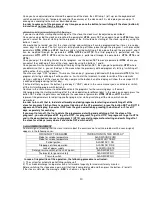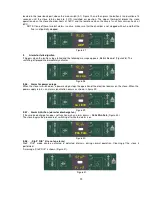
7
Figure 2
When you are using an external pipe between the stove and the smoke exhaust pipe, it is compulsory that you use
one „T“ connection (joint) (as shown in figures 5 and 6), with a cover for cleaning (plug) by the stove. The
application of these “T” connective reinforcements must enable collection of ash which is created inside the pipe
and temporary cleaning of the smoke exhaust pipe without any need for pipe removal. The smoke is exposed to
slight pressure. For this reason it is compulsory to check whether the opening, i.e. the cover (the plug) for cleaning
of the smoke exhaust system is perfectly hermetically closed and that it remains like that after every cleaning. Make
sure that the assembly is made in the same order and check the condition of the seals.
Perform the installation of the smoke pipes according to figure 7.
It is strictly recommendable to avoid use of horizontal extensions i.e. continuations, and if required, make sure that
the pipe is not counter-inclined, but it has one slope of at least 5%. The horizontal extension can in no event pass
the length of 3m.
It is not recommendable to connect the smoke exhaust directly to the stove with a horizontal extension longer than
1m. Look at figures 4,5,6 and 8. After the T joint, it is necessary that you place a vertical extension of Ø 80mm,
length of at least 1-1,5 m and then after this to continue with the horizontal extensions of Ø 80mm and vertical
extension of Ø 80 and Ø 100mm depending on the height of the smoke pipe (flue) as shown in table 1.
Figure 3 on the left side shows how the end (the top) of the flue should look like when you have two flues one by the
other, and figure 3 on the right side shows what is not appropriate for making the end.
Figure 3
3.3 INSULATION AND DIAMETER OF OPENINGS (holes) ON THE ROOF (or on the wall)
Once the position of the stove is determined, it is necessary to make one hole i.e. an opening through which the
smoke exhaust pipe should pass. This varies depending on the type of installation, the diameter of the
smoke exhaust pipe (look at table 1) and the type of wall or roof through which the pipe should pass. Look
at table 2. The insulation must be made of mineral wool with a nominal density bigger than 80 kg/m
2
.
YES
NO








































